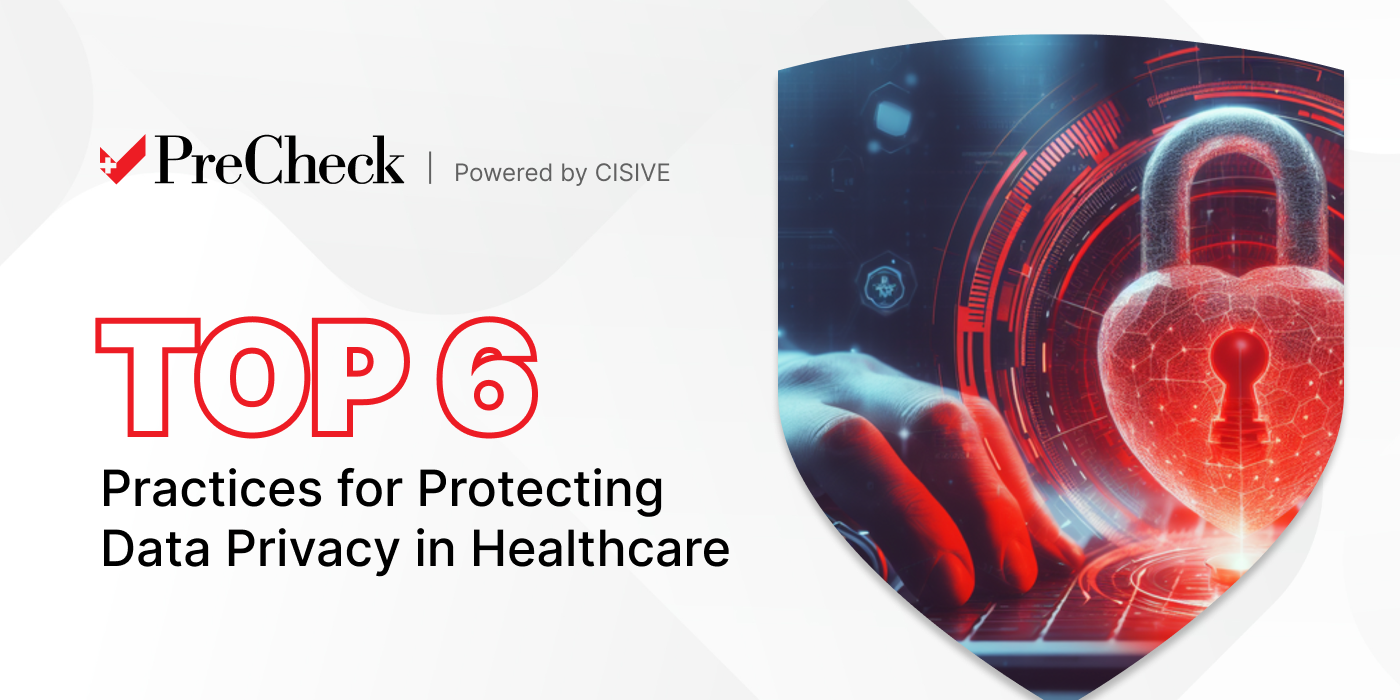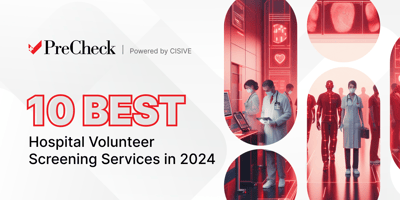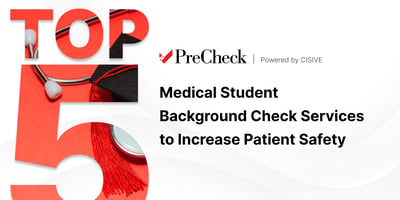

Healthcare organizations must meet stringent requirements when it comes to hiring nurses and other...

As healthcare institutions continue to embrace technology and digitization, the risk of data breaches and unauthorized access to sensitive information has increased. Protecting data privacy in healthcare continues to be a priority.
Data breaches have severe consequences for healthcare organizations, including financially. Healthcare data breaches are the costliest across industries, with an average cost of nearly $11 million. Learn how to create a secure environment that upholds patient trust and confidentiality.
Top five takeaways:
|
Healthcare data privacy refers to the protection of sensitive information related to patients' health and medical records. It involves safeguarding personal details such as names, addresses, medical history, and test results from unauthorized access or disclosure. Protecting data privacy helps maintain patient trust and confidentiality.
Healthcare systems must keep patient data safe, secure, and private. This includes preventing unauthorized access, breaches, or misuse, as well as appropriate security rules, policies, and procedures.
There are many local, national, and regional laws around the world governing or affecting patient data privacy. Maintaining compliance prevents penalties, reduces the risk of data breaches, and avoids reputational damage and loss of patient trust. Here are some of the most important laws regulating healthcare data.
The Health Insurance Portability and Accountability Act (HIPAA) is a U.S. law that protects the privacy and security of patients' personal health information. The law includes a privacy rule that aims “to assure that individuals' health information is properly protected while allowing the flow of health information needed to provide and promote high quality health care and to protect the public's health and well being.”
HIPAA governs how healthcare institutions handle and safeguard sensitive data, including medical records, test results, and patient details. HIPAA applies to health plans, healthcare providers, and healthcare clearinghouses, as well as business associates working for a covered entity.
HIPAA matters because it establishes guidelines and requirements for healthcare institutions regarding patient data. HIPAA also promotes health information interoperability, allowing healthcare providers to securely share patient data for coordinated and efficient care.
The General Data Protection Regulation (GDPR) applies to European Union member states. It aims to protect the privacy and personal data of individuals within the EU, including healthcare information. GDPR applies to how healthcare institutions collect, store, process, and share personal data, including sensitive health information.
The regulation requires healthcare organizations to obtain explicit consent from patients before collecting and using their personal information. GDPR also requires healthcare institutions to protect patient data from unauthorized access, loss, or disclosure. Non-compliance can result in fines and reputational damage.
U.S.-based healthcare organizations should also account for GDPR, as it applies to healthcare providers with patients who are EU citizens.
HIPAA and GDPR are just two of the laws protecting patient information and healthcare data privacy. Others include:
Healthcare systems operating across borders, including those performing global background checks, need policies and procedures for protecting employee data across jurisdictions. In the interests of consistency, consider designing policies to follow the most stringent regulations across every geography.
In an ever-changing healthcare landscape, there are always new challenges and risks to data privacy you need to take precautions against. You must be proactive about mitigating these risks and safeguarding patient data. Here are common challenges and risks facing healthcare leaders today.
As healthcare systems become more interconnected and digitized, there's a growing volume of data being generated and shared across platforms and devices. This complexity creates more opportunities for data breaches and unauthorized access to patient information.
The widespread adoption of EHRs, telemedicine, and other digital healthcare tools heightens the urgency of securely transmitting, storing, and accessing data. However, the complexity of these systems makes security difficult. Healthcare organizations must navigate interoperability, data-sharing agreements, and regulatory compliance. Falling short in any of these areas can create vulnerabilities.
Moreover, the many stakeholders involved — including healthcare providers, insurance companies, researchers, and third-party vendors — adds to the complexity. Each entity may have different data privacy practices and security protocols, making it challenging to ensure consistent protection of patient information.
Insider threats and unauthorized access to sensitive patient information pose significant challenges to healthcare data privacy. These threats can arise internally from employees, contractors, or partners who unintentionally breach data privacy or are cyberattack victims. However, stakeholders with legitimate access to patient data can also be insider threats who misuse or abuse their privileges.
Insider threats can occur for many reasons, including financial opportunity, personal vendettas, curiosity, or negligence. For example, an employee might access patient records without a valid reason or share sensitive information with unauthorized individuals. Such actions can lead to breaches of patient confidentiality, identity theft, or fraud.
Preventing insider threats and unauthorized access requires a multifaceted approach. Healthcare organizations should implement strict access controls, review and track user activities, and provide comprehensive training on data privacy and security. It's crucial to foster a culture of awareness and accountability. Emphasize the importance of protecting patient information and the consequences of unauthorized access.
As healthcare organizations adopt technologies such as artificial intelligence, Internet of Things devices, and cloud computing, security measures must also evolve. But healthcare organizations can struggle to keep up with new technological vulnerabilities and threats.
Moreover, emerging technologies often bring new complexities and risks. For example, the increased use of mobile and remote access to healthcare systems creates additional entry points for malicious actors. Integrating systems and platforms, meanwhile, can lead to interoperability challenges, making it harder to ensure consistent data privacy policies across software and systems.
To address these challenges, healthcare organizations must stay informed about the latest security practices and tools. Conduct regular risk assessments, implement robust encryption and authentication mechanisms, and establish strong security policies and procedures. Work with technology vendors and security experts to identify and mitigate the risks associated with emerging technologies.
Organizations have a range of best practices available for protecting healthcare data privacy and maintaining the safety, integrity, and confidentiality of patient information. Here are six of them.
Give employees a framework for understanding their responsibilities with sensitive information and the procedures for handling patient data.
Set policies emphasizing the importance of patient data privacy and the consequences of non-compliance. Communicate these policies to all employees through training sessions and written materials. Use simple language and examples to make sure that everyone understands and can apply them.
Additionally, provide specific instructions on handling patient health information securely. This includes guidelines on password management, data encryption, secure file sharing, and proper disposal of physical documents.
Invest in robust security measures, such as encryption and access control, to protect patient data stored in EHRs and other digital environments. Encrypting data prevents unauthorized access, while access controls limit who can view, modify, or delete patient information.
Run regular software updates and patches to all health IT systems. These updates include security enhancements that address known vulnerabilities and protect against emerging threats. Automate these software updates whenever possible to ensure they aren’t overlooked.
Document potential risks and vulnerabilities that could compromise patient data privacy. This includes assessing physical assets, such as computers and servers, software systems, and on-premises and cloud networks. Encourage employees to report potential risks they witness during day-to-day activities.
After identifying possible risks, evaluate the likelihood and potential impact of each. This involves considering the probability of a security incident and the potential harm it could cause to patient data privacy. By prioritizing risks based on their likelihood and impact, you can focus your resources on the most critical vulnerabilities.
Develop and implement mitigation strategies, such as additional security controls, intrusion-detection systems, or updated policies and procedures to ensure compliance with privacy regulations. Regular monitoring and reassessment of risks is also important to ensure that mitigation strategies remain effective over time.
Develop comprehensive training programs that communicate the importance of patient data privacy and the potential consequences of non-compliance. These programs should use simple language to break down complex security concepts. Share real-life examples to help employees see how the training applies to their work. Your training should cover such topics as accessing and sharing patient information, password management, secure communication, and proper disposal of physical documents.
Training sessions can be conducted in person or through online modules. They should be mandatory for all staff members who handle patient data. Start data privacy training with employee onboarding to establish a culture of safety and responsibility.
Conduct refresher sessions to reinforce the learnings and to provide important updates and changes. Make sure your employees get the chance to ask questions about data privacy protocols or procedures.
Assemble a dedicated incident-response team consisting of stakeholders from IT, legal, compliance, and other key functions. This team will develop and implement incident-response plans. Establish clear roles and responsibilities for personnel responding to a data breach or security incident.
The plan should include step-by-step procedures governing the response to a data breach or other security incident. Include guidance for detecting and reporting incidents, assessing their impact, containing them, and notifying appropriate parties, including patients, regulators, and law enforcement. The plan should also cover how to investigate incidents and preserve evidence.
Conduct regular testing and training to make sure your incident-response plan is effective and that employees understand their roles and responsibilities. You can do this through simulations, tabletop drills, and other exercises. Learn from these tests, as well as real-life incidents, to refine and improve the incident-response plan.
Vetting candidates and employees for involvement in data breaches is crucial to ensure the protection of patient data privacy in healthcare.
One of the best steps you can take is to partner with a trusted background screening provider, like Cisive. This partner will conduct criminal background screening on candidates and employees to identify past involvement in data breaches or other security incidents. The screening process includes verifying employment history, checking references, and conducting criminal background checks.
Background checks identify individuals with a history of involvement in data breaches. You can avoid hiring risky candidates and reassign employees away from positions where they have access to sensitive patient information. Generally, in healthcare, you’re legally required to vet candidates for convictions of fraud and abuse. Hiring excluded individuals can result in civil penalties.
Establish clear policies for conducting background checks and making hiring decisions based on the results. Communicate these policies to relevant stakeholders, including HR and hiring managers, to ensure consistent and fair decision-making.
As cybersecurity threats proliferate and healthcare systems digitize, data privacy and security remains a priority. By adhering to data privacy regulations, adopting best practices, and fostering a culture of awareness and accountability, you can protect patient data from breaches or misuse.
Partnering with a reliable screening provider gives you peace of mind, as you’ll employ people who prioritize patient data privacy. Working with the right partner mitigates the risk of data breaches and fosters a culture of trust and accountability — ultimately safeguarding patient privacy and well-being.
Ready to take the next step to protecting patient privacy? Schedule a call with one of our background screening experts.

Healthcare organizations must meet stringent requirements when it comes to hiring nurses and other...

Building a strong volunteer program for your medical facility offers staff and patient benefits,...

Hospitals, medical schools, and other healthcare organizations should screen medical students...